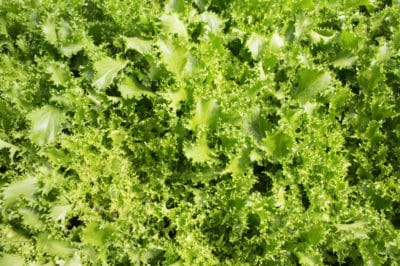Planting
Like lettuce, endive is a cool-season green that grows best during the shorter days of spring and fall. Many gardeners only grow it in the fall because of its tendency to bolt in the hot summer. If growing endive in the spring, start it early for the best results. Sow seed in a greenhouse about a month before your last hard freeze.
When transplanted outside, the soil should be well draining but only needs to be moderately fertile. Occasional applications of compost are enough to feed endive plants. Adding a source of calcium such as gypsum can help prevent tip burn.
It’s possible to direct seed endive, especially in cooler climates. Sow seed after danger of freeze in the springtime, and one month before first expected frost in the fall. A bit of frost on fall crops enhances the flavor of endive. Popular varieties include:
- Galia (45-60 days)
- President (80 days)
- Salad King (98 days)
- Tosca (85 days)
- Frisan (98 days)
Care
Whether transplanting or thinning, give new starts a 6-inch spacing. Like lettuce, endive may bolt if the weather reaches above 75° (24°C). Providing it with a partially shaded spot will help it withstand warmer temperatures.
Keep the soils evenly moist at all times. If the plant dries out it will slow growth, cause toughness in the leaves, and may result in bolt. Excellent companion plants include radish, turnip, and parsnip.
Harvest
Endive and its cousin escarole are both typically blanched in the field prior to harvest. This process removes some of the bitter chlorophyll and gives the green a milder flavor. Blanch heads 2-3 weeks before harvest.
Gather up the whole head of greens in one hand leaving the root in the ground. Slip a rubber band or other fastener around them to hold them upright. The idea is to deprive the inner leaves of sunlight, which will slow chlorophyll production and bitterness.
Another way is to cover the entire plant with a light depriving pot. This method works better in wet climates, as banding the leaves together can encourage rot.
After blanching,cut off the head at the soil level. Greens can be stored in a plastic bag in the fridge with a dry paper towel to soak up excess moisture. Eat endive raw as a salad green, or cook it like a collard. They will keep for up to 2 weeks.
